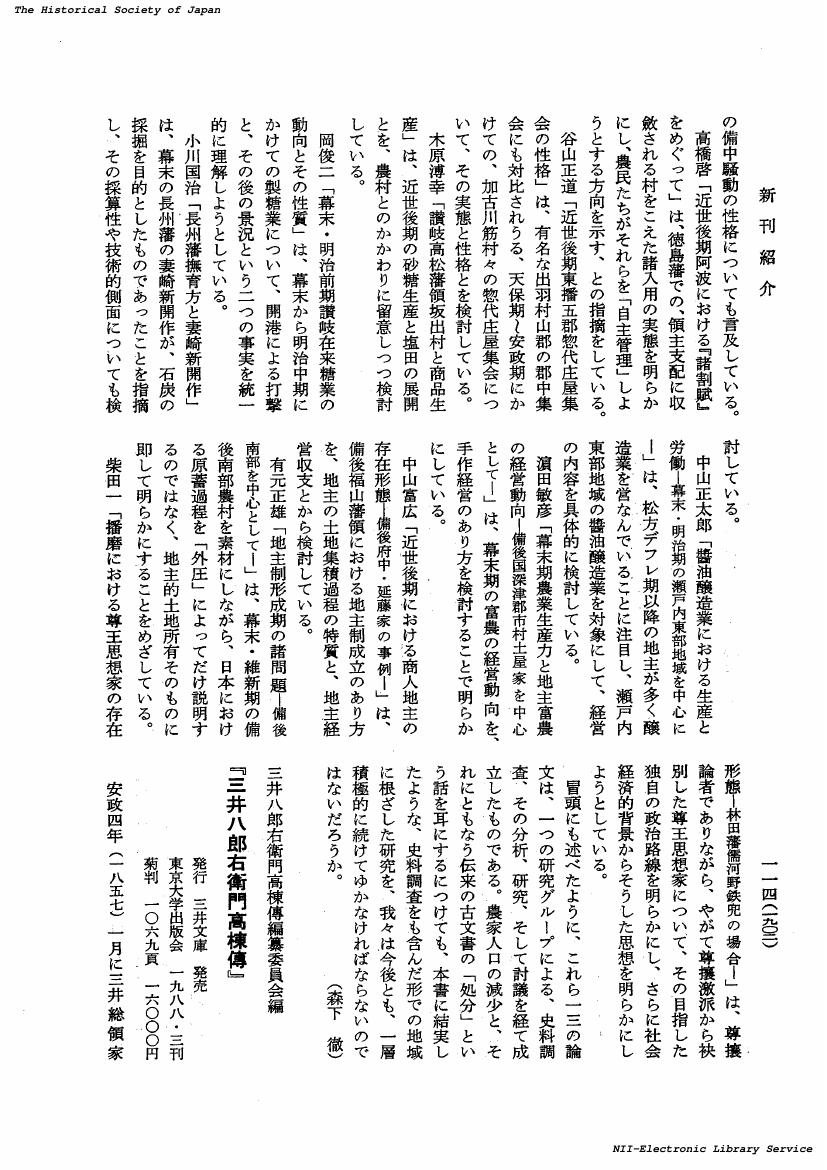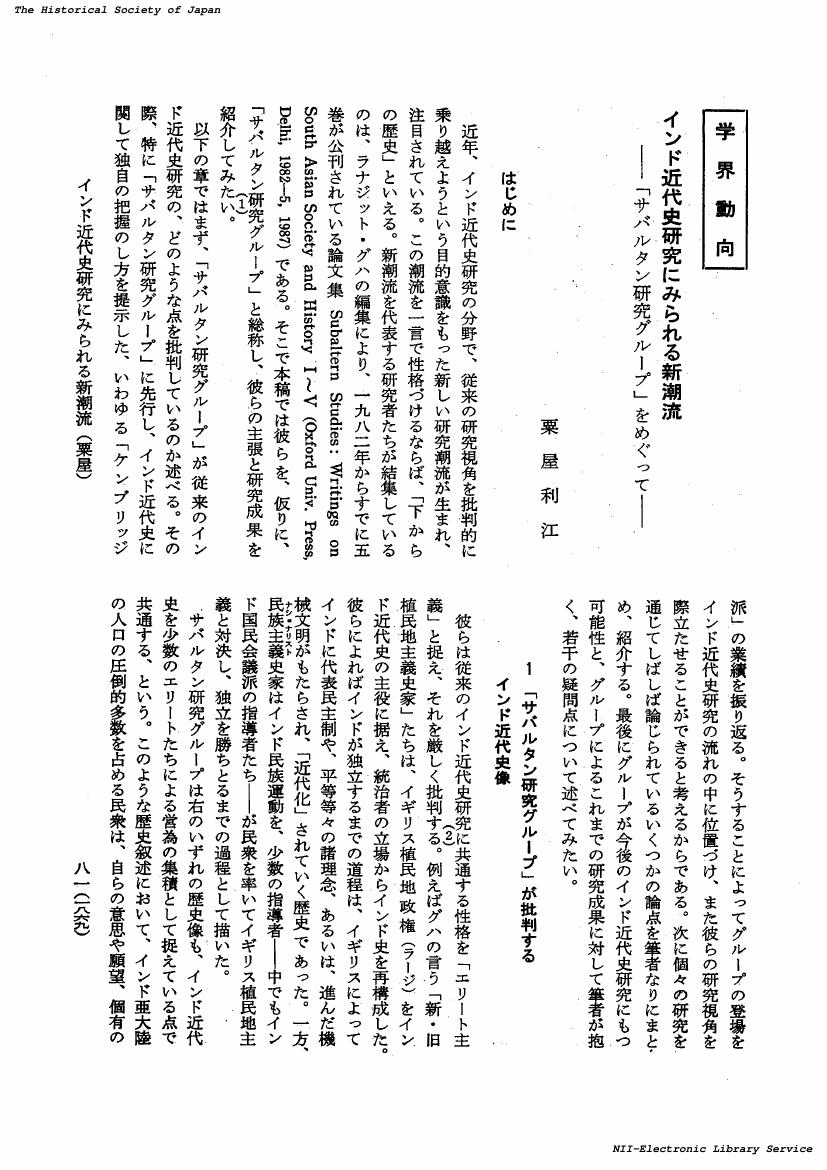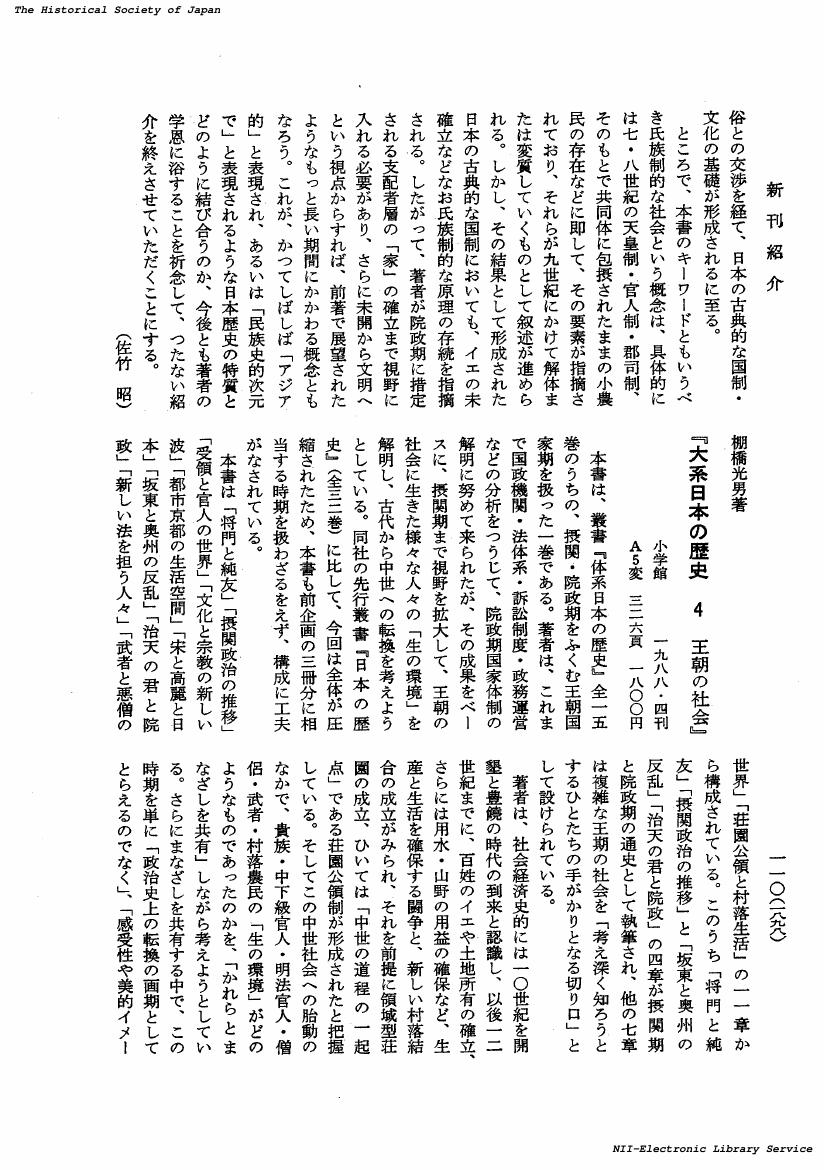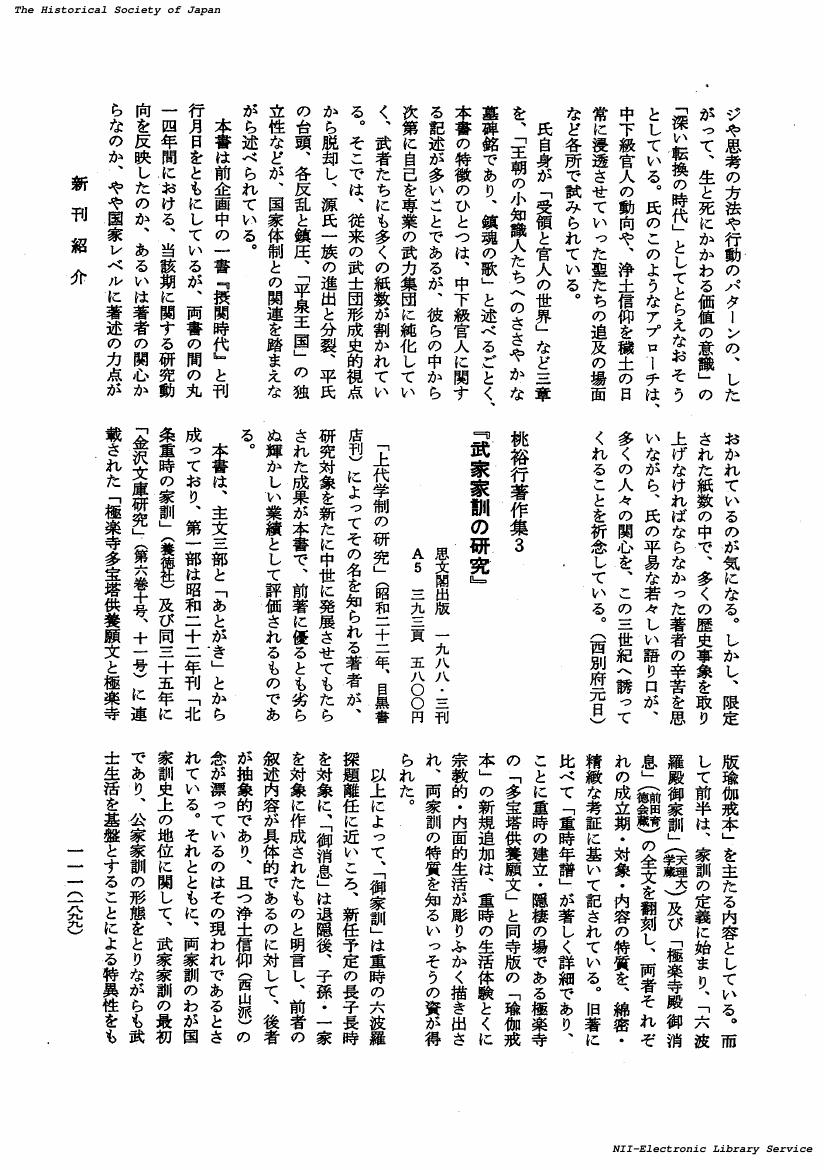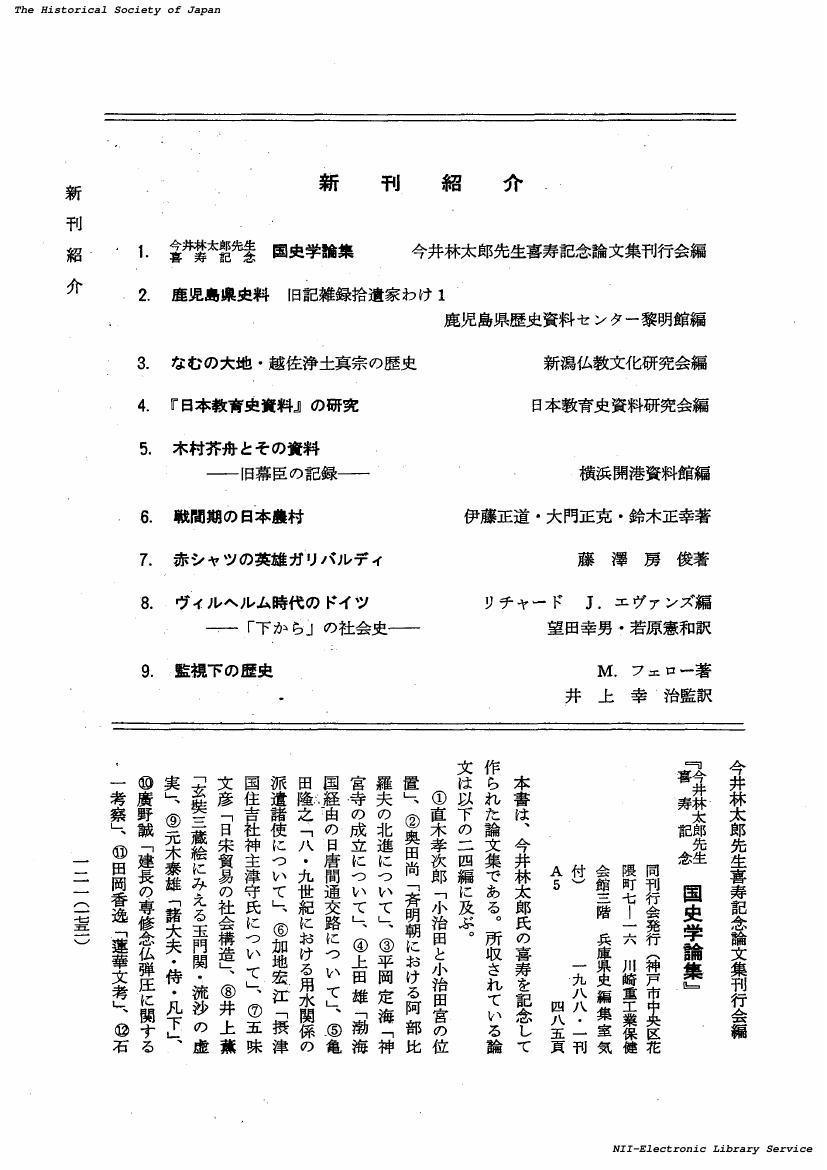1 0 0 0 OA ハルハ・モンゴルにおける清朝の盟旗制支配の成立過程 : 牧地の問題を中心として
- 著者
- 岡 洋樹
- 出版者
- 公益財団法人 史学会
- 雑誌
- 史学雑誌 (ISSN:00182478)
- 巻号頁・発行日
- vol.97, no.2, pp.145-176,279-28, 1988-02-20 (Released:2017-11-29)
Under Ch'ing 清 rule, most of the Mongolian tribes were organized under the Cirulran-qosiru system or league-banner system. But the three necessary conditions of establishment of qosiru, that is, the organization of sumun and qamjilr-a, the supply of pasture for qosiru and the appointment of jasar, meant radical change for the existing Mongol order and especially meant bureaucratization of Mpngolian noyans. Concerning pasture land, this system meant delimitation of qosiru's pasture. So it is very difficult to imagine the introduction of this system into Mongolia taking place within a short time. This paper discusses when the pasture's delimited border was established among the Qalq-a Mongols. In the case of the Qalq-a Mongols, it is said that this system was introduced at the conference of Dolun narur in 1691 or the 30th Year of Emperor K'ang-hsi 康煕. But the objective conditions of the Qalq-a in 1691 could not have permited such radical reforms. This is because they had been fleeing to Southern Mongolia from the invasion of Γaldan Bosurtu qaran since 1688. Γaldan died in 1697 and the Qalq-a Mongol returned to Outer Mongolia, but the Ch'ing dynasty took a prudent attitude in compelling a delimited qosiru border on the Qalq-a, because of their cooperation in the struggle against Cewengrabdan's Jegun rar force. Moreover the Ch'ing dynasty could not border their pasture, which often moved because of an unstable military balance between Jegun rar and the Ch'ing force. Although the defeat of Jegun rar by the Ch'ing conquest during 1755-1757 cleared all obstacles to compulsory establishment of this system all over Qalq-a, the Ch'ing government continuously took care because of Qalq-a resistances, for example the rebelion of Cinggunjab or the movement for secession from Ch'ing rule to Russia. For this duration, pasture was regulated by the Qalq-a Mongol nobles, not by imperial authority. Such conditions often gave rise to trouble between the Ch'ing government and Qalq-a nobles. A typical example was the request for extension of pasture land from Qalq-a nobles as well as from Cenggunjab, the lieutenant general of Uliyasutai. Such conditions were finally settled by the delimitation of ayimar's border by Batu, who was delegated by the emperor for this mission in 1781 or the 46th year of emperor Ch'ien-lung 乾隆. Soon after Batu's delimitation, banner's border was also delimited. I can therefore presume that the delimited banner's border was established soon after 1781 or the 46th year of emperor Ch'ien-lung. Furthermore, I can say that the Cirulran-qosiru system was substantially established after this time, and not at the conference of Dolun narur in 1691.
1 0 0 0 OA 「反プロイセン意識」とバイエルン社会民主党 : 一八九〇年代前半を中心に
- 著者
- 鍋谷 郁太郎
- 出版者
- 公益財団法人 史学会
- 雑誌
- 史学雑誌 (ISSN:00182478)
- 巻号頁・発行日
- vol.97, no.12, pp.1977-1997,2071-, 1988-12-20 (Released:2017-11-29)
Noch heute begegnet man in Bayern einer bestimmten Abneigung gegen Norddeutschland. Im Kaiserreich war man sich ihrer als "PreuBenhaB" bewuBt. Bei meiner Arbeit handelt es sich darum, den EinfluB dieses PreuBenhasses auf die Sozialdemokratische Partei Bayerns (SPB) zur Zeit des Vorsitzes von Georg von Vollmar, dessen Bestreben es war, die SPB zu einer Massenpartei zu machen, aufzuzeigen. Die Untersuchungszeit beschrankt sich hauptsachlich auf die erste Halfte der 1890er Jahren. Der PreuBenhaB der SPB hatte zwei Dimensionen. Zum einen ist er auf staatlicher Ebene anzutreffen. Die SPB wandte sich gegen eine preuBisch-unitarische Tendenz, die vollstandige Integration Bayerns in das unter riesiger preuBischer Zentralgewalt stehende Deutsche Reich zu erzwingen. Diese Politik hielt sie fur unertraglich. Von einem foderalistischen Standpunkt aus betonte die SPB mit Nachdruck die bayerische Staatssouveranitait. Ich mochte den PreuBenhaB auf dieser Ebene als "MakropreuBenhaB" bezeichnen. Ihr lag die Uberzeugung zugrunde, daB Bayern nicht nur sozialpolitisch, sondern auch kulturell hoherentwickelt als PreuBen war. Zum andern existierte ein PreuBenhaB auf innerparteilicher Ebene, den ich "MikropreuBenhaB" nennen mochte. Der Vorstand der Sozialdemokratischen Partei Deutschlands (SPD) in Berlin ignorierte die besonderen Verhaltnisse des agrarisch strukturierten bayerischen Landes und seines Volkes, und zwang der SPB eine einseitige Strategie auf, mit der sie aber keine Bauern gewinnen konnte. In der SPB bewertete man das Verhalten des SPD-Vorstandes als Ausdruck des preuBischen Korporalgeistes. Dieses lehnte sie ab und entwickelte dagegen ein dem bayerischen Milieu entsprechendes eigenes Konzept. Beide Dimensionen - die staatliche und die innerparteiliche - verbanden und erganzten sich. Man darf nicht vergessen, daB alle fuhrenden Personlichkeiten der SPB als geborene Bayern nicht nur Sozialdemokraten, sondern auch ausgesprochene partikularistische Patrioten waren. Frau von Vollmar sprach von einer bewuBten "Gefuhlsgemeinschaft" zwischen ihrem Mann und dem bayerischen Volk. Und dazu gehorte auch der gemeinsame PreuBenhaB. Zur Zeit des Vollmarschen Vorsitzes lag die deutsche Reichsgrundung schon zwanzig Jahre zuruck. Aber Regionalismus und bayerischer Patriotismus waren lebendig und wirkten auch in die SPB hinein.
1 0 0 0 OA 水本邦彦著『近世の村社会と国家』
- 著者
- 山田 邦明
- 出版者
- 公益財団法人 史学会
- 雑誌
- 史学雑誌 (ISSN:00182478)
- 巻号頁・発行日
- vol.97, no.12, pp.1998-2007, 1988-12-20 (Released:2017-11-29)
1 0 0 0 OA 堺 憲一著『近代イタリア農業の史的展開』
- 著者
- 丸山 優
- 出版者
- 公益財団法人 史学会
- 雑誌
- 史学雑誌 (ISSN:00182478)
- 巻号頁・発行日
- vol.97, no.12, pp.2007-2016, 1988-12-20 (Released:2017-11-29)
- 著者
- 小口 雅史
- 出版者
- 公益財団法人 史学会
- 雑誌
- 史学雑誌 (ISSN:00182478)
- 巻号頁・発行日
- vol.97, no.12, pp.2037-2039, 1988-12-20 (Released:2017-11-29)
- 著者
- 有光 秀行
- 出版者
- 公益財団法人 史学会
- 雑誌
- 史学雑誌 (ISSN:00182478)
- 巻号頁・発行日
- vol.97, no.12, pp.2039-2040, 1988-12-20 (Released:2017-11-29)
- 著者
- 村井 章介
- 出版者
- 公益財団法人 史学会
- 雑誌
- 史学雑誌 (ISSN:00182478)
- 巻号頁・発行日
- vol.97, no.11, pp.1900-1901, 1988-11-20 (Released:2017-11-29)
1 0 0 0 OA 有元正雄編『近世瀬戸内農村の研究』, 溪水社, 一九八八・二刊, A5, 五〇二頁
- 著者
- 森下 徹
- 出版者
- 公益財団法人 史学会
- 雑誌
- 史学雑誌 (ISSN:00182478)
- 巻号頁・発行日
- vol.97, no.11, pp.1901-1902, 1988-11-20 (Released:2017-11-29)
- 著者
- 千本 暁子
- 出版者
- 公益財団法人 史学会
- 雑誌
- 史学雑誌 (ISSN:00182478)
- 巻号頁・発行日
- vol.97, no.11, pp.1902-1903, 1988-11-20 (Released:2017-11-29)
- 著者
- 張 士陽
- 出版者
- 公益財団法人 史学会
- 雑誌
- 史学雑誌 (ISSN:00182478)
- 巻号頁・発行日
- vol.97, no.11, pp.1903-1904, 1988-11-20 (Released:2017-11-29)
1 0 0 0 OA 樋口謹一編『空間の世紀』, 筑摩書房, 一九八八・三刊, 四六, 三五六頁
- 著者
- 林田 伸一
- 出版者
- 公益財団法人 史学会
- 雑誌
- 史学雑誌 (ISSN:00182478)
- 巻号頁・発行日
- vol.97, no.11, pp.1904-1905, 1988-11-20 (Released:2017-11-29)
1 0 0 0 OA ローマ帝国東部におけるアンガレイア制度の発展と村落共同体
- 著者
- 浦野 聡
- 出版者
- 公益財団法人 史学会
- 雑誌
- 史学雑誌 (ISSN:00182478)
- 巻号頁・発行日
- vol.97, no.11, pp.1789-1828,1937-, 1988-11-20 (Released:2017-11-29)
This article attempts to answer the following three questions on angareia, a requisitioned transport service which was indispensable for military provisions (annona) transport, but was very burdensome for provincials in the later Roman Empire. First, how did measures and practice of the angareia-levy develop during the first three centuries? Secondly, what kinds of necessity or intention of the imperial authority existed behind its development? Thirdly, eventually what kinds of burdens did the provincials (especially villagers) have to bear? The results of the author's investigation through inscriptions from the eastern Roman provinces are as follows. (1)As Sagalassos-Inscription (JRS 66, pp. 107f.) tells us, in the early principate (AD. 1C.), angareia was regarded as the service assessed roughly at the distance between stations (i.e. from one station to the next others), and levied on each central city which was responsible for its own station, en bloc. The central city magistrates levied a portion of the service on each city and village within its territory. Subsequently, in the 2C. in provincia armata (e.g. Moesia Inf, ; Dagis -SEG xix 476), in the 3C. even in provimia inermis (e.g. Asia ; Anossa & Antimacheia -JRS 46, pp.46f.), angareia came to be counted as munera possessionis, assessed strictly in proportion to the amount of land tax (or rent) payments and directly levied on villages. Village notables made arrangements for this service. Only by giving soldier-officials the minor authority of execution could the Empire build up this levy system at the village level. (2)The Empire urged the aforementioned process more and more as tension mounted on the eastern frontier and armies on the march there needed huge amounts of provisions. Because the Empire had to strengthen the angareia-levy system so as to transport annona to the army's station. (3)Not only did the increase in the quantity of transported provisions force provincials into a miserable condition ; but also both the introduction of soldier-officials and the existing subordination of villages to cities caused abuses of power and unauthorized angareia levies on villages. Villagers were on the verge of ruin. It was not until Emperor Leo converted the angareia service into money payments (adaeratio) in order to meet the expenses of public transport (cursus publicus) that these two problems were resolved.
1 0 0 0 OA インド近代史研究にみられる新潮流 : 「サバルタン研究グループ」をめぐって
- 著者
- 粟屋 利江
- 出版者
- 公益財団法人 史学会
- 雑誌
- 史学雑誌 (ISSN:00182478)
- 巻号頁・発行日
- vol.97, no.11, pp.1869-1887, 1988-11-20 (Released:2017-11-29)
1 0 0 0 OA 佐々木寛司著『日本資本主義と明治維新 : 本源的蓄積の日本的特質』
- 著者
- 長岡 新吉
- 出版者
- 公益財団法人 史学会
- 雑誌
- 史学雑誌 (ISSN:00182478)
- 巻号頁・発行日
- vol.97, no.11, pp.1888-1896, 1988-11-20 (Released:2017-11-29)
- 著者
- 佐竹 昭
- 出版者
- 公益財団法人 史学会
- 雑誌
- 史学雑誌 (ISSN:00182478)
- 巻号頁・発行日
- vol.97, no.11, pp.1897-1898, 1988-11-20 (Released:2017-11-29)
- 著者
- 西別府 元日
- 出版者
- 公益財団法人 史学会
- 雑誌
- 史学雑誌 (ISSN:00182478)
- 巻号頁・発行日
- vol.97, no.11, pp.1898-1899, 1988-11-20 (Released:2017-11-29)
1 0 0 0 OA 桃裕行著作集3『武家家訓の研究』, 思文閣出版, 一九八八・三刊, A5, 三九三頁
- 著者
- 結城 陸郎
- 出版者
- 公益財団法人 史学会
- 雑誌
- 史学雑誌 (ISSN:00182478)
- 巻号頁・発行日
- vol.97, no.11, pp.1899-1900, 1988-11-20 (Released:2017-11-29)
- 著者
- 吉田 信之
- 出版者
- 公益財団法人 史学会
- 雑誌
- 史学雑誌 (ISSN:00182478)
- 巻号頁・発行日
- vol.97, no.10, pp.1751-1752, 1988-10-20 (Released:2017-11-29)
1 0 0 0 OA 鹿児島県歴史資料センター黎明館編『鹿児島県史料 旧記雑録拾遺家わけ1』, 発行鹿児島県, 発売春苑堂書店・巌南堂書店, 一九八八・一刊, A5, 解題・例言・目次一三頁 本文六六九頁
- 著者
- 近藤 成人
- 出版者
- 公益財団法人 史学会
- 雑誌
- 史学雑誌 (ISSN:00182478)
- 巻号頁・発行日
- vol.97, no.10, pp.1752-1754, 1988-10-20 (Released:2017-11-29)
- 著者
- 赤澤 計真
- 出版者
- 公益財団法人 史学会
- 雑誌
- 史学雑誌 (ISSN:00182478)
- 巻号頁・発行日
- vol.97, no.10, pp.1755, 1988-10-20 (Released:2017-11-29)






